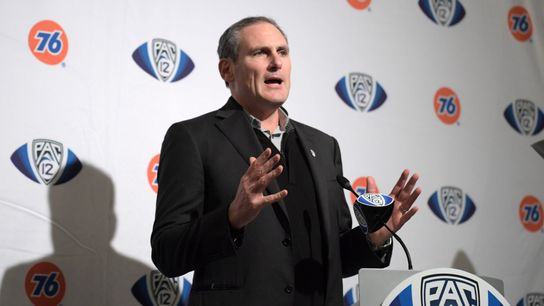LOS ANGELES -- On the surface, USC's matchup against Nevada at the Coliseum this Saturday may not seem all that noteworthy.
The Trojans are currently 38-point favorites over the visiting Wolfpack. ESPN Analytics gives USC a 96.8 percent chance of winning the game. Anything less than a decisive victory would be considered a massive disappointment.
However, USC's matchup against Nevada on Saturday is far from your typical ho-hum, run-of-the-mill nonconference game. After eleven seasons, this will mark USC's final ever football game to air on the colossal failure known as the Pac-12 Network.
#USC fans are planning to celebrate the end of Pac-12 Network. That’s the big milestone attached to the Nevada game. https://t.co/sYNQcEeoGh
— USC Trojans Wire (@TrojansWire) August 30, 2023
To clarify, each Pac-12 team is contractually obligated to appear on the Pac-12 Network a certain number of times each season. That number is equal to the number of nonconference home games that the team plays that season.
With the Trojans playing two nonconference home games in 2023 they must make two appearances on the Pac-12 Network. The television executives decided to get those two games out of the way right off the bat, with last week's opener against San Jose State and this week's Nevada game both airing exclusively on the Pac-12 Network.
The tour continues at home… #TrojanTakeoverTour 🏠👀✌️ pic.twitter.com/kAAelbHqga
— USC Football ✌️ (@uscfb) August 29, 2023
So how exactly did we get this point?
When then-commissioner Larry Scott launched the Pac-12 Network in 2012, his goal was to turn the Pac-12 into more than a conference. He wanted it to also be a media company. Hence, he decided not to follow the lead of the SEC and Big Ten, who partnered with ESPN and Fox, respectively, with their conference networks.
Instead, Scott decided to have the conference handle production and distribution of the Pac-12 Network itself. In order to do so, he rented out an expensive television studio in the heart of San Francisco to serve as its headquarters—a move that would later send the conference into crippling debt.
But distributing the network proved to be much more difficult than Scott anticipated. In eleven years, the conference was never able to get a deal with DirecTV or Verizon Fios—despite having several opportunities to do so. As streaming rose to prominence during the past decade, the network never agreed to terms with YouTube TV, either. Hence, each Saturday in the fall, millions of college football fans around the country were left unable to watch their favorite team play.
It’s truly a disservice to CFB fans that USC’s first game of the season is on the Pac-12 Network which is normally available to like 4 people. Shame.
— Kayce Smith (@KayceSmith) August 27, 2023
Even the services that did carry Pac-12 Network relegated it to an extra tier, forcing subscribers to pay additional money in order to watch the "Conference of Champions". Meanwhile, backed by ESPN and Fox, the SEC and Big Ten were able to get their conference networks into basic sports packages alongside the likes of ESPN and FS1.
So the Pac-12 Network is only available as an extra on both streaming services that it's offered on (Sling + FuboTV).
— Matt Wagner (@Matt_Wagner24) August 26, 2023
Meanwhile, Big 10 is on the basic plan for both.
I can't wait until this poverty conference goes up in flames.
Larry Scott and George K. suck.
As if all that wasn't enough, creating one network for the conference wasn't enough for Scott. So he launched seven—a main Pac-12 Network, plus six regional networks for each of the conference's six regions (Los Angeles, Bay Area, Oregon, Washington, Mountain, and Desert).
Not only was seven networks for a conference of twelve teams incredibly excessive, it actually made it even harder for fans to watch games. For instance, while a key football game between Arizona State and Utah would air on Pac-12 Mountain and Pac-12 Desert, fans in Los Angeles would instead get a re-air of a UCLA gymnastics meet from four months prior (definitely not speaking from experience on this one).
I literally can’t make this up. Walked down to a bar by my apartment IN LOS ANGELES
— Joe DeLeone (@joedeleone) August 27, 2023
They can’t get the Pac-12 Network
As a result of Scott's colossal failure, thousands of USC fans have had to miss out on several of the Trojans' games each season for the past decade. At this point, it has essentially become an annual right of passage.
On Saturday, that right of passage will occur for the final time. After this week, the remainder of USC's 2023 matchups will air on either ABC, ESPN, ESPN2, Fox, FS1, or NBC. When the Trojans move to the Big Ten next season, all of their games will air on Fox, FS1, CBS, NBC or Peacock.
So make sure to pour one out for Larry Scott on Saturday. At long last, his colossal failure of a project will no longer be able to hurt us. At long last, we will actually be able to watch every game that USC Football plays.
It truly is the end of an (atrocious) era.
